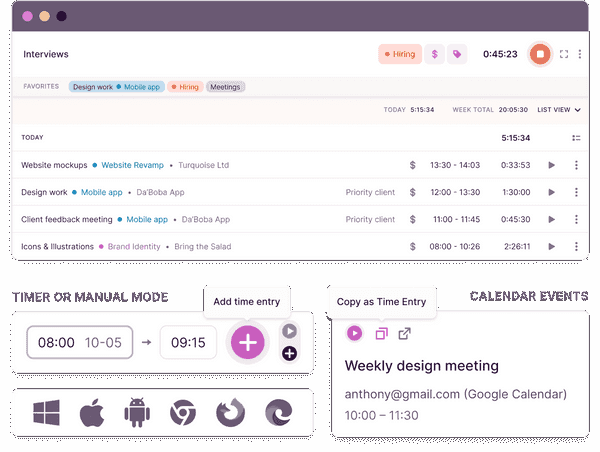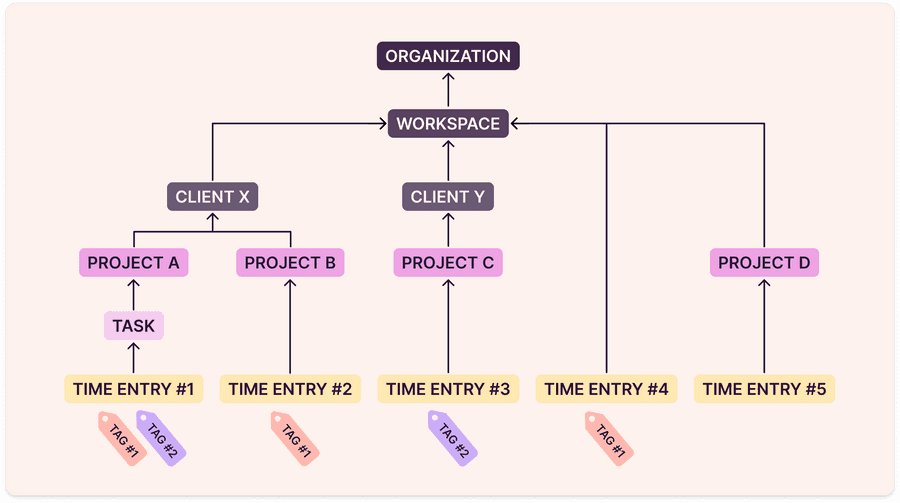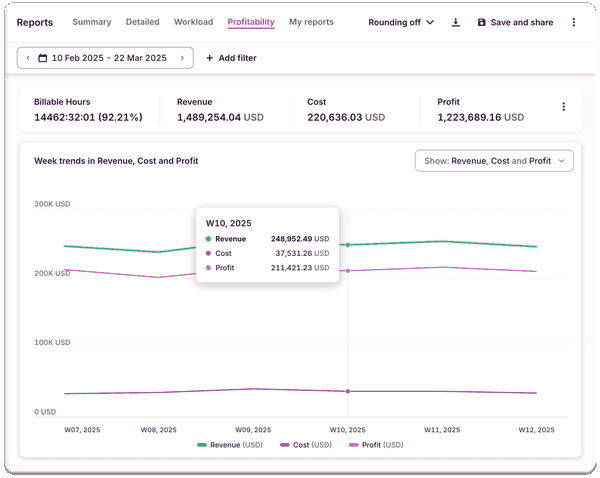Future-Proof Your Agency with Smarter Project Planning
Your agency projects are on fire — and not in a good way. Even though 86% of organizations now have a project management office, many modern agencies are caught in a cycle of reactive planning and burnout as they try to keep up with shifting project requirements and demanding clients.
When you’re trying to stay afloat, profitability is often the first thing to sink. The solution? Smarter, more strategic project planning.
This playbook is for you if:
Your project schedule keeps getting derailed by changing client requests, leading to scope creep and timeline delays
You're trying to offer too much at once, often at the expense of quality, efficiency, and — let’s face it — team sanity
Your project lifecycle is hectic, with teams flitting between frantic overwork and too much idle time because resource allocation isn’t your strong suit
You have the same difficult conversations about client deliverables and timelines despite your best efforts to plan ahead
It will help you develop a client-centric project management plan built on data and numbers so you can deliver exceptional work, grow your agency sustainably, and achieve consistent project success.
We'll share insights from two content agency founders who have navigated these exact challenges — Brooklin Nash of Beam and Tom Whatley, Founder and CEO of Grizzle. Together, we'll provide you with actionable strategies to build your own future-proof project planning system.
Cooking up a
successful
project plan
What a project plan actually is (and isn’t)
Project planning can be bureaucratic work, involving several documents that seem similar to the untrained eye. Before we outline how to build a good project plan, let's actually define what it is (and isn't).
A project plan is a comprehensive document outlining project goals, deliverables, timeline, resources, budget, risks, contingencies, and responsibilities to guide execution from start to finish.
A project plan is not:
A work plan, which mainly focuses on task sequencing and assignments. It’s usually part of a more elaborate project plan.
A project scope that documents boundaries and deliverables but lacks the operational details of how to actually get things done.
A work breakdown structure (WBS), which provides the hierarchical breakdown of deliverables but doesn't address timelines or resource allocation.
A project charter, which authorizes the project and outlines high-level objectives but doesn't detail execution strategy.
The ingredients list of a good project plan
Your project plan is a living document that should evolve as your project progresses. When you boil it down, every successful project plan is made up of the same stock:

Project overview and objectives
Start with clear, measurable goals that define what success looks like. This includes the project's purpose, vision, and specific outcomes you want to achieve.

Scope definition
Outline what’s included in (and excluded from) the project. This simple step prevents scope creep down the line — a common cause of project failure — yet 48% of project managers skip it.

WBS
Break the project into manageable components, tasks, and subtasks. A good WBS details the hierarchy of deliverables, from biggest to smallest component, without worrying about allocating timelines or resources.

Timeline and milestones
Develop a realistic schedule with key checkpoints to track progress. Your project plan should account for dependencies, constraints, and critical path analysis. Only 34% of companies “mostly” or “always” complete projects on time.

Resource allocation
Specify the human, financial, and material resources required to successfully pull off the project, including team roles, responsibilities, and availability considerations.

Risk management strategy
Identify potential obstacles and develop contingency plans. This proactive approach distinguishes robust project plans from basic task lists, yet 1 in 3 project managers don't regularly engage in risk management.

Communication framework
Outline how information will flow among stakeholders, including reporting cadence and escalation protocols.

Work plan
Create a plan where each task and subtask is sequenced in chronological order, and assign it to the appropriate team member.
Where to build your project plan
82% of companies use work and project management software to drive organizational efficiencies. The right platform depends on your team’s and project’s specific needs. Here’s a shortcut to making that decision.

Microsoft Project

Smartsheet
Best for: Complex projects requiring advanced capabilities like resource leveling and Gantt analysis
The evolution of
client expectations
B2B tech marketing moves fast, and client expectations change just as quickly. The shift in what clients want and need from their agency projects impacts how to plan and deliver projects. Focus on the following factors as you build your project plan.
Results over vanity metrics: As analytics tools become more accessible, clients expect a clear return on investment from their project work. The focus has shifted from metrics like traffic to revenue-driving numbers like sign-ups, demo requests, and sales.
Concierge over one-size-fits-all: Agencies win when client experience is the differentiator. They now expect higher levels of flexibility and “customizable-ness” from you as a service provider.
Integrated solutions over siloed services: Clients increasingly seek end-to-end solutions, rather than isolated services. Grizzle, for example, evolved from a digital PR agency to an integrated content marketing agency that goes beyond PR to cover editorial content, SEO, video, lifecycle marketing, and more.
Tom Whatley says,
6 common mistakes
of project plan execution
Growing an agency can feel like sprinting full pelt on a hamster wheel while slowly losing grip on what once worked. We’re here to shake you out of your chaos and snap you back into CEO mode.
If you find yourself nodding along to any of these indicators, your approach to project planning may need a little love.
1. You chase revenue, regardless of fit
It's tempting to say “Yes!” to every opportunity that comes your way, especially in the early days. But not all revenue is created equal. Brooklin describes a $300,000 project offered to Beam that would have required a complete team restructuring just to accommodate that one client. “[It] didn't really feel like it set us up for long-term success,” he says, so he turned it down.
Look at the active conversations at the bottom of your funnel. Who do you think will close, and when? From there, plan out next month's revenue and what sort of resources it will require and support.
"The approach we have taken is forecasting three to six months out with ongoing conversations because sometimes things close in a few weeks, sometimes it's a few months."— Brooklin Nash
2. "But we’ve always done it this way"
If you’re not keeping your finger on the pulse of the market, you’re already behind the curve. Taking social content as an example, TikTok was relevant three years ago, now it’s just a cesspool of ads. If your approach to project planning remains static, so will your bottom line.
The best thing you can do is know your customer. If you’re close to their problems, you’ll understand how things are moving in the industry just by paying attention.
"If clients are consistently asking for a service, that’s a good signal to explore it. But don’t jump in just because competitors are doing it."— Tom Whatley
3. You launch new services without testing them first
When you see an opportunity to expand your offering, you take it almost impulsively. But just because you can put together and hard launch a new offer in a weekend doesn’t mean you should.
Treat your new services like a pilot project, rolling out to a select few clients first. This approach lowers your risk while maintaining an experimental and innovative energy in your agency.
"Validate services on a small scale first. Test with existing clients who trust you before making a large commitment."— Tom Whatley
4. You focus on tactics, not results
If your project planning focuses on tasks and tactics, clients might fixate on the wrong details, like how many calls you’ve booked, instead of how much revenue you’ve driven. This disconnect makes it challenging to deliver work that satisfies the client and meets their business goals.
Your North Star should always be your client’s results, not the path you take to get them. Make sure you’ve defined your client’s success metrics before thinking about tactics.
"It comes down to ‘does this [tactic] align with our roadmap, and is it going to help us get to this end goal faster and more efficiently?’"— Tom Whatley
5. Your team is burnt out
Chasing revenue is a special kind of addiction. And as a founder, you signed up for that race. But your team didn’t. It can be hard when the blinders of growth are firmly in place, to turn and see how thin on the ground they are. Without realistic resource allocation, bottlenecks form, deadlines get missed, and team morale takes a hit.
Start by getting clear on your team’s capacity. You can use a project time tracking tool to build a clear picture (more on this later!)
"Our approach is calm productivity. I don’t care when you do the work as long as it gets done. The only way to do that is by being really strict about team workload, freelance capacity, and project timelines."— Tom Whatley
6. You’re struggling to keep healthy profits
You keep adding new services and attracting new clients, but you don't have the profits to match. Often, you default to underpricing because you 'need the revenue.'
Create a clear pricing structure based on real time-tracking data that accounts for all costs involved.
"It has to be profitable from the get-go. We aim for at least 50% profit margins per service line in the long term."— Tom Whatley
How to use time tracking for better project planning
While sleek project management tools visualize tasks and dependencies, time tracking solutions are even more crucial to building a successful project plan. Tom Whatley mentions,
Track time your way
Choose from manual tracking, timer mode, or fully automated time tracking — whatever best suits your team and tech stack. An intuitive tool like Toggl Track leads to 100% team adoption and accurate time logs, which helps agencies bill clients correctly, avoid lost revenue, and identify inefficiencies more precisely. Crucially? It also frees up time for higher-value tasks by automating admin work.

Organize time entries with real-time collaboration
50% of project managers spend one day or more generating reports, which is quite the time-suck. Instead, Toggl Track structures your time and project data into one-click reports for every stakeholder. Track project-specific metrics like budgets, billable rates, and timelines. You can create, edit, archive, and delete projects, add team members, and set project estimates and fixed fees.
Here are four ways to organize your data in Toggl Track:
- Clients represent the individuals or companies you complete work for. Group projects under each client to simplify reporting, make billing easier, and analyze different properties per client.
- Projects group related time entries under a shared initiative or goal, which you’ll link to each client. You can create Project Templates to save time, ensure consistency across similar projects, and reduce setup errors by reusing needed configurations.
- Tasks are smaller, actionable items within a project. They can be assigned to team members (on paid plans) to enable detailed tracking, and improve workload visibility.
- Tags are custom labels added to time entries to provide extra context. They're flexible, not tied to a specific project or a client and available across all projects for added detail.

In real terms, these features spot trends in client demands and profit potential. For example, an agency owner who is monitoring tags as part of a retrospective realizes the demand for digital PR projects has grown YoY by 52%, while Google Ads projects have stalled. Now they know where to pivot.
Forecast time and budget progress with dashboards
Forecasting helps agencies prevent scope creep, manage costs, and anticipate project completion. Toggl Track provides two forecasting charts to maintain accurate budgeting and better resource planning:
- Time tracking charts predict project completion based on tracked hours and project estimates.
- Billing amounts charts track financial progress against fixed fees, showing predicted compilation based on billable hours.
Create fixed fee projects
Fixed fee tracking enables agencies to monitor project profitability, avoid over-delivery, and improve financial forecasting.
You can add a fixed fee to new or existing projects. The fixed fee amount appears in the Project Dashboard, where you can track progress against the fee in real time. For recurring projects, the fixed fee applies automatically each period.
Analyze profitability with multi-level reports
Comprehensive profitability analysis better equips you to improve pricing, staffing, and project budgeting decisions. You can analyze profitability by member, client, or project.
Go to Reports, select the Profitability tab, and filter by your preferred segment: Members, User Groups, Projects, Clients, Tasks, or Tags. This allows you to analyze your profitability on different levels.

The 7-step process
to future-proof your agency project
management system
Modern agencies need planning systems that evolve as quickly as client expectations. Based on everything we’ve covered so far, here's a seven-step framework to build a robust planning system that delivers results while keeping your team sane and your profits healthy.

Step 1: Audit your approach
Evaluate what's working and what isn't by reviewing recent projects against the six common mistakes outlined earlier. Identify patterns in scope changes and budget overruns, gather team feedback on your process, and compare your average profit against your desired margins.

Step 2: Set profitability goals
Build profitability into your planning from day one by setting up:
- Clear profit margin targets
- Comprehensive time tracking across teams and projects
- Pricing that accounts for all costs
- 10-20% contingency buffers in estimates

Step 3: Educate your clients
Transform clients into partners through standardized onboarding, clear expectation setting, and regular check-ins to prevent misunderstandings. Building response templates for common questions or difficult conversations can streamline operations and reduce admin time.

Step 4: Focus on outcomes
Center planning on results rather than individual tasks or tactics. Define clear objectives and success metrics to help your team prioritize what truly impacts client goals. Set up project milestones for each objective, to keep your reports tied to impact, not busywork.

Step 5: Create time-tracked modular frameworks
Break services into reusable components you can mix and match for bespoke offerings while maintaining profitability. Use tools like Toggl Track to log component durations. This modular approach enables accurate resource planning even for custom projects.
This strategy is also great for slowly testing, refining, and scaling new offerings. Grizzle used this approach when expanding into video production.

Step 6: Manage your people
Grizzle operates on a freelancer-to-employee model, meaning almost everyone who currently works in-house started as a freelancer. Tom argues it’s a low-risk way to get expert talent you can trust, without long-term commitments.
The second step is making sure your team isn't overwhelmed with too much work, which you can easily keep an eye on with Toggl Track’s granular time tracking.

Step 7: Listen to your clients’ feedback
The best agencies can distinguish between valuable feedback that improves outcomes and requests that create unnecessary complexity. When incorporating change requests, clearly communicate impacts on timelines and budgets to maintain client trust while protecting profitability.













